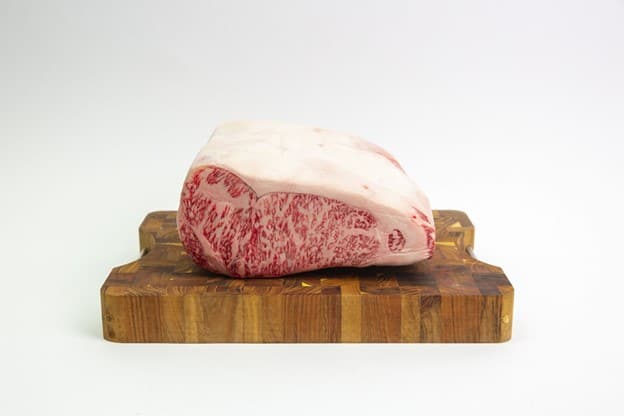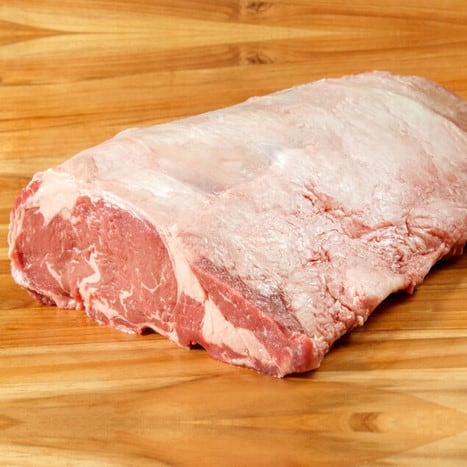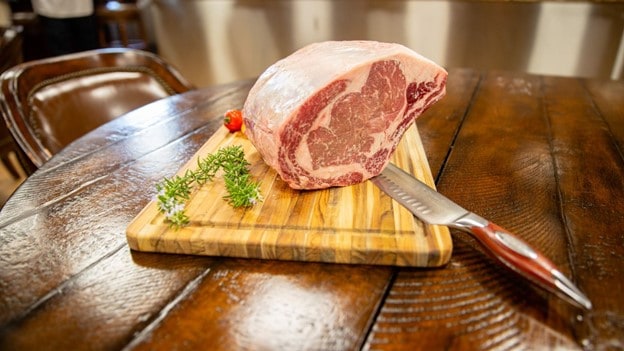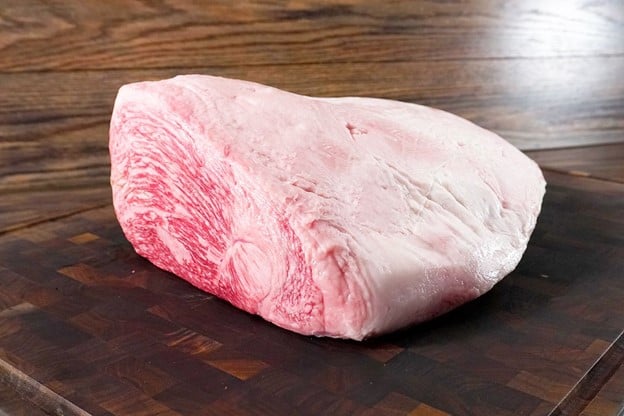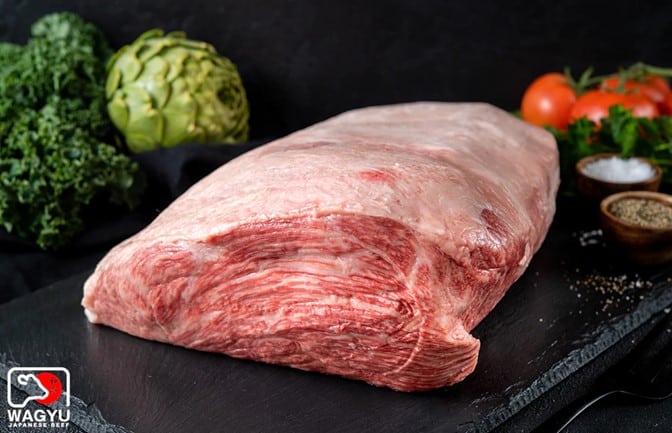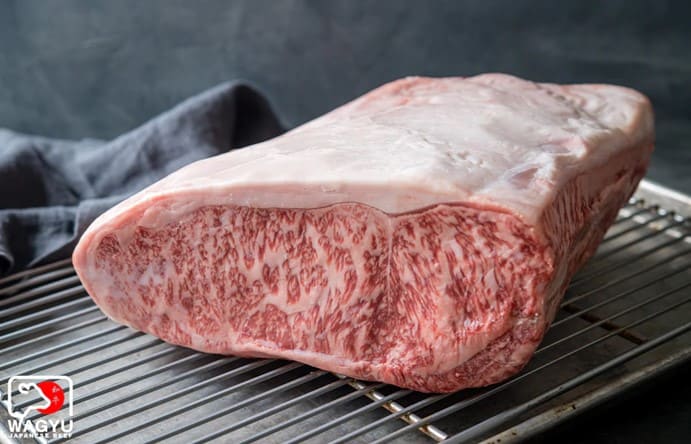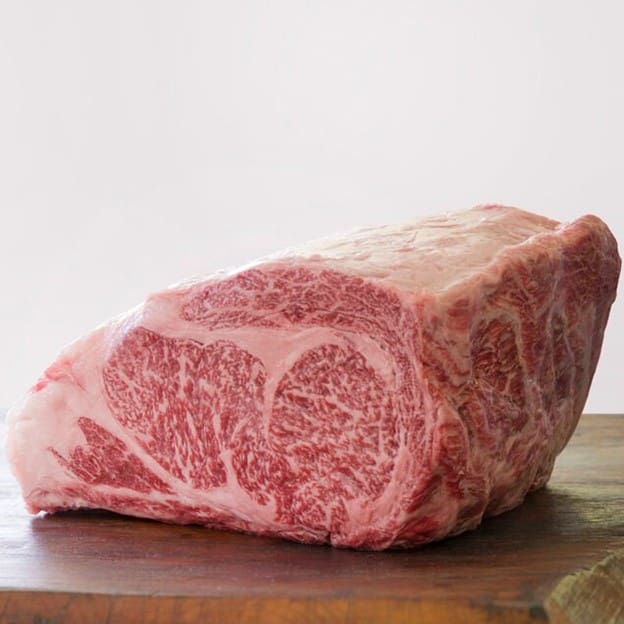In 2022 alone, at the time of writing, over 81 million tons of meat have been consumed worldwide. Nowhere is this more apparent than in America, which leads the world in meat consumption at around 273 pounds per person, per year. Among this meat, steak is the most coveted, if not the most frequently eaten for price reasons.
These are not the most expensive steak meals in the country but the meat that restaurants source for their decadent creations. This is the meat that steakhouses anywhere would kill for, the most expensive cuts of steak in the world. Continue reading to learn about where it comes from, what it tastes like, and what you could expect to pay for this super-steak.
- Olive A5 Wagyu Ribeye Steak
- A5 Kobe Strip Steak
- Angus Beef Boneless Ribeye Roast
- Prime Whole Rib
- Miyazaki A5 Sirloin Cap Picanha
- Takamori Drunken Wagyu A5 Wagyu Beef Coulotte
- A5 Wagyu Beef Whole Boneless Striploin
- A5 Japanese Wagyu Beef Boneless Ribeye
Size: 24 oz
Location: Japan
Cut: Rib shoulder

photo source: Grand Western Steaks
Olive A5 Wagyu ribeye steak kicks off this list with beef sourced from Japan, which will be a common thing on this list. This particular cut is sourced from Olive Wagyu, which is bred in the Kagawa Prefecture on Shodoshima Island. The climate there is mild year-round, practically perfect for raising these cows, of which there are only 1,700 on average (they’re called “Sanuki”) on the whole island at any given time.
Olive Wagyu is tender and rich due to its high oleic acid content, which makes its fat yellow and makes it taste distinctively nutty. A 24oz Olive A5 Wagyu ribeye steak can cost $300.
Did you know?
The reason that the Olive A5 Wagyu ribeye steak is high in oleic acid content is that these cows are fed a special diet of roasted and dehydrated olives. This colors and tenderizes this unique cut of meat.
Size: 8-10 pounds
Location: Japan
Cut: Top short loin

photo source: Grand Western Steaks
The Kobe Beef Distribution & Promotion Council in Japan doesn’t certify just any beef as coveted A5 Kobe. Only purebred cows known as Tajima-gyu from the valued breeders in the Hyogo Prefecture can be used to source this A5 Kobe Strip Steak. Despite being one of Japan’s most famous exports, only 0.2% of beef eaten in Japan is A5 Kobe.
This strip steak is 8-10 pounds in size and will set you back $399.
Did you know?
The pure seedstock cattle in Japan or “motoushi” are infamously high quality due to Japan’s isolation. After cows were originally brought there from China, they have reinforced their pure genetic lineage among themselves on the lonely island of Japan. Japan’s beef connoisseurs have been protecting their beef’s pure lineage since the Edo period, which lasted from 1615 to 1867. This purity continues to this day.
Size: 16 pounds
Location: United States
Cut: Front backbone

photo source: D’Artagnan
The Angus Beef Boneless Ribeye Roast is 100% natural, raised from USDA Angus cattle without additives like antibiotics, steroids, hormones, and other junk. This boneless cut is 16 pounds on average and sells for $449.99, which puts it at the top of the bottom of our list of the most expensive cuts of steak.
These cattle are raised 100% as vegetarians following strict animal raising regulations, which not only keep the cows happier and make animal activists happier but also give the beef a richer flavor.
Did you know?
American Angus cattle was originally bred from venerated Aberdeen Angus from Scotland. Only black cattle can be certified as angus, while red-coated cows have to be designated red angus.
Size: 18-20 pounds
Location: United States
Cut: Center rib

photo source: Grand Western Steaks
Representing America’s most expensive contribution to this list is the Prime Whole Rib, an 18–20-pound cut of steak that is certified USDA Prime. It’s the most ordered cut of beef in American steakhouses owing to its mouthwatering marbling and the flavor it garners from being shipped and cooked with the bone in.
Also called a rib roast or export rib, prime whole rib is perfect for dry aging. It is aged for 4 weeks before being shipped frozen. A prime whole rib of this size and quality will cost you $790.
Did you know?
When certified USDA prime, this juicy cut represents only the top 2% of beef in the United States. Dry aging is a process of tenderizing beef that exposes it to the open air in a controlled environment, which changes its flavor over time due to how muscle enzymes break up in meat like this. This is what tenderizes dry-aged steak.
Size: 8-10 pounds
Location: Japan (Miyazaki Prefecture)
Cut: Top rump

photo source: Grand Western Steaks
From the Miyazaki Prefecture in Japan, this A5 Sirloin Cap Picanha is sourced from Japanese Black cattle raised on Kyushu Island, the third largest in Japan and the agricultural center of its prefecture. Since this meat is so fatty, it dissolves at 25 degrees Celsius. However, since the fat is totally even in its distribution, the meat doesn’t taste greasy or sticky. The result is that this tender beef literally melts in the temperature of your mouth.
A cut of A5 sirloin cap Picanha from Japan weighing around 8-10 pounds can cost as much as $990.
Did you know?
Picanha is a coveted cut of steak taken from the top of the rump of the cow. This is why this tender cut, covered or “capped” in a thick layer of fat, is also called rump cap, rump cover, or sirloin cap.
Size: 10 poudns
Location: Japan (Yamaguchi Prefecture)
Cut: Top sirloin butt

photo source:
Yet another cut of steak sourced from Japan, this Takamori Drunken Wagyu A5 Wagyu Beef Coulotte is an untrimmed, 10-pound cut of meat from the Yamaguchi Prefecture. It is sourced from Japanese Black cattle or “Kuroge” and ships overnight in carefully chilled, controlled conditions (it is never frozen).
The flavor of this beef is silky and sweet, owing to the cows’ diet of sake mash made using Dassai Sake, a Japanese alcohol. This is where the beef gets the name, “drunken Wagyu.” This coulotte cut, which is a lean cut from the hindquarters of the cow, sells for $999.
Did you know?
Only one farm in the Yamaguchi Prefecture is authorized to sell this high-end beef, which definitely drives up the prices. The fabled farm is in the city of Iwakuni.
Size: 9 pounds
Location: Japan (Miyazaki Prefecture)
Cut: Top loin

photo source: The Wagyu Shop
This 9-pound cut of steak is certified for its authenticity as A5 Wagyu beef, the most coveted designation for any meat. This whole boneless striploin is imported from Japan chilled under the strictest conditions. This beef is Miyazakigyu, which means that it can only be raised and processed in the Miyazaki Prefecture, which is known for its high-quality cattle.
Miyazaki beef has won numerous awards, including consecutive first place prices at the Japanese National Competitive Exhibition of Wagyu. This whole boneless striploin costs $1,199.
Did you know?
“Wagyu” actually refers to any of four types of Japanese cattle, including Black, Brown, Polled, and Shorthorn. This boneless striploin comes from a Kuroge, or Japanese Black cow.
Size: 11 pounds
Location: Japan
Cut: Center rib portion

photo source: D’Artagnan
The most expensive cut of steak is the A5 Japanese Wagyu beef boneless ribeye. A5 Wagyu beef, as discussed above, is imported from Japan at the absolute peak of perfection, free from antibiotics and hormones, sourced from pedigree cattle raised on strict diets in stress-free conditions by master connoisseurs with eyes for beef.
This boneless ribeye has incredible marbling, giving it a texture like meaty velvet and an almost sweet aftertaste. Only a few sources of beef in the country are rated A5 for quality. Scoring this A5 Japanese Wagyu beef boneless ribeye will therefore cost you $1,499.99 for the whole cut.
Did you know?
Wagyu or “Japanese cattle” actually encompass several breeds that are separated by region. These include Matsusaka, Yonezawa, Mishima, Omi, Sanda, and the coveted Kobe beef.
The Takeaway
The world’s most expensive cuts of steak are also some of the most delicious anywhere. The value of this meat is caused by many factors, including the quality and selectivity of the cattle sourced, the location, breeding and feeding conditions, the type of meat, the cut itself, and more. As you can see from this list, Japan leads the world in expensive steak cuts owing to its venerated breeding stock, which has been in a selective, high-quality lineage for hundreds of years. They’re the masters at raising the world’s most expensive steak, even if American cattle breeders made a good show of it in the first half of the list.


